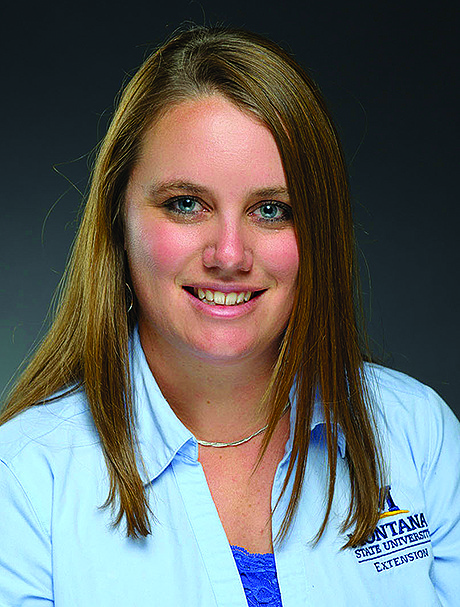Example Article for Broadwater County Extension Agent
Digging Into Soil Health: Applications For Cropland
 | Author:
Allison Kosto, MSU Broadwater County Extension Agent
MSU Broadwater County Extension Agent |
Digging into Soil Health: Applications for Cropland
Allison Kosto
MSU Broadwater County Extension Agent
While soil health principles are important in any situation, they may be most critical in cropland. Cropland has the potential for regular soil disturbances, frequent nutrient cycling, fertilizer inputs and removal of plant growth through crop cycles. Paying close attention to the health of your soil is a key piece to the puzzle to manage land in a sustainable and productive way.
This is the second in a three-part series digging into soil health. The first article focused on soil health broadly sharing information about the importance of soil health, soil characteristics, soil food web and organic matter. This article focuses on specific techniques to apply soil health principles in agriculture systems, and the last article will provide strategies to improve soil health for home gardeners.
Reducing or eliminating tillage is a common practice to improve soil health. By avoiding tillage, producers can conserve moisture, allow for more microbial activity and increase organic matter. It can greatly reduce or even eliminate soil erosion. The technique can also increase profits for farmers by requiring less labor and equipment, decrease fertilizer costs and possibly increase yields. The disadvantages of no-till technology include the reliance of herbicides for weed control, special planting equipment, soil compaction in the upper zone, and possible greater frequency of certain insect, disease and weed problems. Plant residues can also be a problem for some crops but can be minimized through proper management.
Increasing organic matter is another way to improve soil health. Through simple soil testing, you can establish current levels of organic matter and set a target for where you want to be. Productive soils have organic matter in the range of 4 to 6 percent. There are lots of ways to incorporate organic matter into the soil. Crops or crop residue may supply some organic matter. Composted manure or organic fertilizers also increase organic matter in the soil. The use of cover crops can also do this.
A cover crop is defined as any plant growing to provide living ground cover that is planted with, or in between, rotations of the main crop. In addition to improving soil health, research has shown that cover crops can help minimize soil erosion, prevent nutrient leaching, provide organic nitrogen, suppress weeds, increase crop diversity and provide beneficial insect habitats. In our area, we have many cow-calf operations in addition to irrigated farmland. In this situation, dual-purpose cover crops for grazing and soil improvement can be an added tool for ranchers. This additional forage can extend the grazing season and reduce reliance on hay stockpiles. The most widespread practice in our county for cover crops is to follow a grain crop with a late summer cover crop (mid to late August) and use that cover crop for fall or early winter grazing. Another option is to do a spring or summer cover crop that can be grazed during the summer or early fall. However, this is less common in our area.
Crop rotation is a common management tool. Through crop rotation, pests who thrive in a certain crop are not given a chance to build up their population with repeated years of the same crop. Crop rotation can also assist in managing weeds and allowing for rotation of herbicides.
Soil testing is a helpful tool to allow you to monitor your soil over time. Start by collecting baseline data to see where your soil is before starting any new practices. Soil testing has developed over time to include a variety of tests focused on soil health with a wide range of prices. Many of them are lab-specific. Do you research before choosing. Once you decide on a test, it is important to stick with the same one for a while to see changes over time. Switching between tests each time can skew results.
What does research say in relation to implications of soil health practices? There is a wide range of research with a wide range of results. This is because it is difficult to replicate soil health practices from one farm to the next because of differences in soil type and management practices. Soil health research at Montana State University has primarily been conducted in a dryland environment with mixed results. While the research has shown some soil health benefits, it has also shown that the economic results of soil health practices may not always benefit the grower. Therefore, it is important to trial practices on a small scale before jumping in with large acres. Each agriculture producer often finds the practices that fit their operation the best and meet their goals for sustainability, productivity, environmental stewardship and financial viability.
The MSU Broadwater County Extension Office has a no-till drill available for lease. If you have questions about soil health practices or to inquire about the drill, stop by your local MSU Extension Office in Broadwater County at 416 Broadway or contact us at 406-266-9242 or allison.kosto@montana.edu.